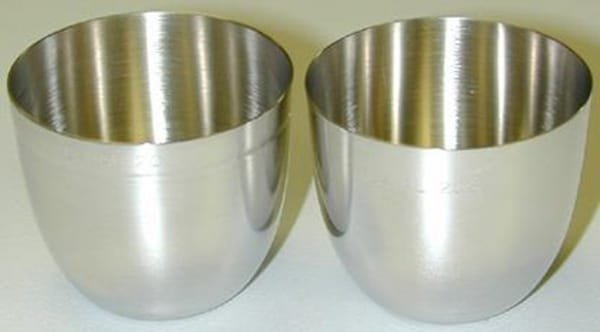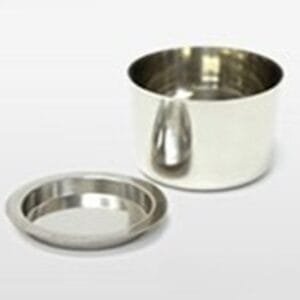Herzog Platinum Crucibles & Molds Description

Herzog Platinum Crucibles & Molds Specification
Size: Customized
Material: PtAu5 (95% Pt and 5% Au)
Purity: Pt ≥ 99.95%
Below is our regular product list. We also accept the custom configuration. All weights are in grams and all dimensions are in millimeters.
Herzog Platinum Crucibles
Code | Description | A1 | D | B | Weight |
PT9901 | Without rim (illustrated) | 50 | 38.5 | 30 | 76 |
PT9902 | Without rim | 50 | 38.5 | 30 | 90 |
PT9903 | Without rim | 50 | 38.5 | 30 | 115 |
PT9904 | With upper rim | 50 | 38.5 | 30 | 110 |
PT9905 | Upper rim and curved base | 50 | 38.5 | 30 | 115 |
PT9906 | With crucible support | 36 | 22 | 38.5 | 40 |

Herzog Platinum Molds
Code | Shape | D2 | A2 | A1 | B | C | Weight |
PT9907 | round | 29 | 31 | 44 | 3 | 1.5 | 40 |
PT9908 | square | 29 | 31 | 44 | 3.5 | 2.5 | 65 |
PT9909 | round | 39 | 41 | 52 | 4 | 1.5 | 50 |
PT9910 | square | 38 | 40 | 50 | 4.5 | 3 | 113 |

Herzog Platinum Crucibles & Molds Packaging
Our Herzog Platinum Crucibles & Molds are clearly tagged and labeled externally to ensure efficient identification and quality control. Great care is taken to avoid any damage which might be caused by storage or transportation.





Reviews
There are no reviews yet.